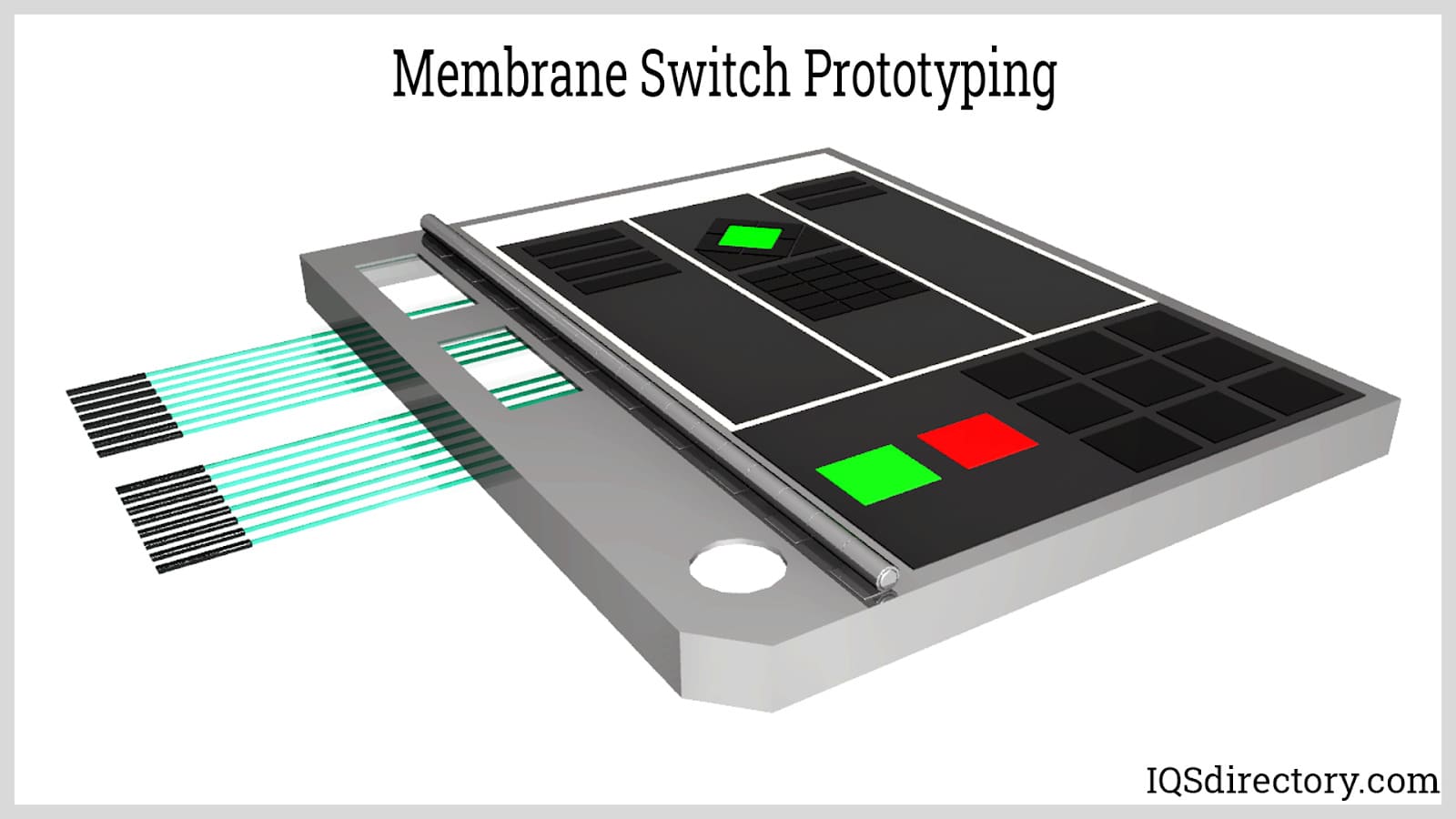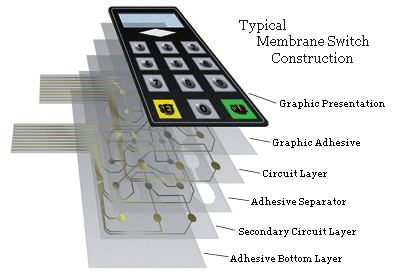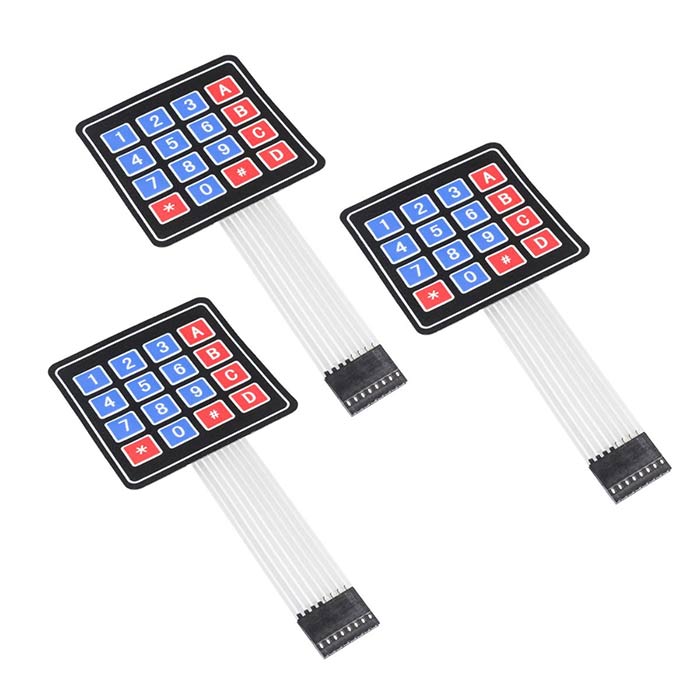Everything About Membrane Layer Change: Comprehending Its Style and Performance
When you assume regarding the control interfaces in modern-day devices, membrane layer buttons commonly come to mind. Allow's discover what collections membrane layer switches apart from other control systems.
What Are Membrane Layer Buttons?

Membrane switches can likewise be customized concerning shape, size, and graphics, permitting makers to produce special interfaces customized to certain products. On the whole, membrane layer buttons play a substantial role in boosting individual experience throughout a wide array of applications.
Exactly How Membrane Layer Switches Over Job
When you press a trick on a membrane button, it activates a simple yet efficient device. The top layer, frequently made from versatile material, pushes down onto a conductive layer beneath it. This action bridges the gap in between conductive traces, finishing an electrical circuit. As quickly as the circuit shuts, it sends out a signal to the tool's controller, which translates your input.
You'll observe that the tactile comments differs based upon the switch style, supplying either a soft click or a much more obvious feedback. When you release the key, the membrane go back to its initial position, resuming the circuit and quiting the signal. This process takes place practically instantly, making sure a receptive user experience.
Membrane buttons are prominent as a result of their longevity and resistance to dirt and wetness, making them ideal for numerous applications, from home home appliances to clinical gadgets. Recognizing this procedure aids you value their prevalent usage.
Trick Elements of Membrane Switches
Recognizing the vital elements of membrane layer buttons is essential for understanding their performance and design. The safety layer shields against ecological factors and wear, prolonging the button's life-span. By understanding these elements, you'll obtain understanding into just how membrane layer changes operate and their relevance in different applications.
Materials Made Use Of in Membrane Layer Switch Over Design
The performance and sturdiness of membrane layer switches over greatly depend on the materials made use of in their layout. You commonly experience polyester and polycarbonate as main substratums as a result of their outstanding stamina and flexibility. These products withstand scratches and chemicals, making them suitable for demanding atmospheres.
The conductive layers frequently utilize silver or carbon, picked for their integrity and conductivity. membrane switch manufacturer. Silver offers superior efficiency, while carbon is a cost-effective choice. For the overlay, you could consider a matte or shiny finish, depending on your aesthetic needs and individual experience
Adhesives play an important function as well; they bond layers firmly and guarantee long life. Make sure to select adhesives that endure environmental elements like temperature level and moisture. Do not forget the relevance of a good printing technique for graphics, as it boosts both performance and aesthetic allure. Selecting the right products will certainly assure your membrane layer button stands the test of time.
Design Factors To Consider for Membrane Layer Switches
While developing membrane switches, it's essential to consider different elements that affect their performance and individual experience. Beginning by concentrating on the design and button dimension; make sure they're intuitive and very easy to navigate. Consider the responsive feedback you want to provide-- will customers require an obvious click or a softer touch? Additionally, assume concerning the products you'll make use of, as they'll impact longevity and visual appeals.
Don't ignore the graphic design; clear labeling and shade contrast are significant for presence. Verify your layout suits ecological variables, like moisture or temperature level variants, which might influence performance. Keep in mind the significance of testing prototypes with real individuals to gather feedback and make essential modifications. This iterative process helps you refine the layout, validating it fulfills both practical and visual demands successfully. By meticulously taking into consideration these elements, you'll create a membrane switch that improves usability and complete satisfaction.
Applications of Membrane Buttons
Membrane buttons are functional parts discovered in various applications, from commercial tools to customer electronic devices. You'll see their influence in devices that require sturdy user interfaces and in devices that gain from smooth designs. Recognizing these applications assists you value the capability and usefulness of membrane switches in day-to-day innovation.
Industrial Equipment Usage
When you're looking to enhance the functionality of industrial devices, membrane layer switches supply a reputable remedy that incorporates sturdiness with straightforward style. These buttons are best for rough settings, offering resistance to dirt, dampness, and chemicals. Embrace membrane layer buttons to enhance your operations and boost total performance.
Consumer Electronics Integration
In the domain of consumer electronics, membrane buttons play a necessary duty in improving individual interaction and tool capability. Membrane buttons also ensure resilience and resistance to dust and moisture, expanding the life expectancy of your electronics. By choosing membrane buttons, you boost not simply the performance however also the design of your tools, making day-to-day communications smooth and enjoyable.
Benefits and Downsides of Membrane Layer Buttons
While membrane layer switches offer a series of advantages, they also include some downsides that you ought to take into consideration. One significant benefit is their portable style, making them suitable for space-constrained applications. They're also cost-effective, giving a long lasting option with a reduced production price. In enhancement, their smooth surface is easy to tidy, enhancing hygiene in atmospheres like healthcare facilities.

However, there are downsides. Membrane switches can have a shorter lifespan contrasted to mechanical switches, specifically under heavy usage. They can additionally be much less tactile, which might impact customer feedback during procedure. Moreover, if harmed, repairing them can be tough and frequently calls for complete substitute. Eventually, their level of sensitivity to extreme temperatures and environmental conditions might limit their efficiency in particular settings. Stabilizing these benefits and drawbacks will help you determine if membrane layer buttons are the appropriate fit for your task.
Often Asked Questions
For How Long Do Membrane Layer Changes Commonly Last?
Membrane switches usually last in between 5 to ten years, depending on use and environmental problems. You'll wish to examine variables like wear, exposure to moisture, and temperature changes to determine their longevity efficiently.
Can Membrane Switches Be Customized for Particular Layouts?
Yes, you can customize membrane layer buttons to fit specific designs (membrane switch manufacturer). You'll have the liberty to choose shades, forms, and designs that match your project's needs, guaranteeing they blend perfectly check out this site with your total visual
What Is the Expense Array for Membrane Layer Switch Over Manufacturing?
The price array for membrane layer button production commonly drops in between $1 and $10 each, depending upon factors like layout intricacy, quantity, and materials. You can obtain quotes from suppliers to find the most effective choice.

Are Membrane Changes Water-proof or Resistant?
Membrane layer switches can be designed to be waterproof or immune, relying on materials utilized and building methods. If you require them for damp settings, ensure you define those requirements throughout the layout procedure.
How Do Membrane Changes Compare to Typical Switches?
Membrane layer buttons are typically thinner and more adaptable than conventional switches, supplying a smooth style. They're frequently simpler to clean and incorporate, yet may not give the responsive responses you're utilized to with mechanical alternatives.
Conclusion
